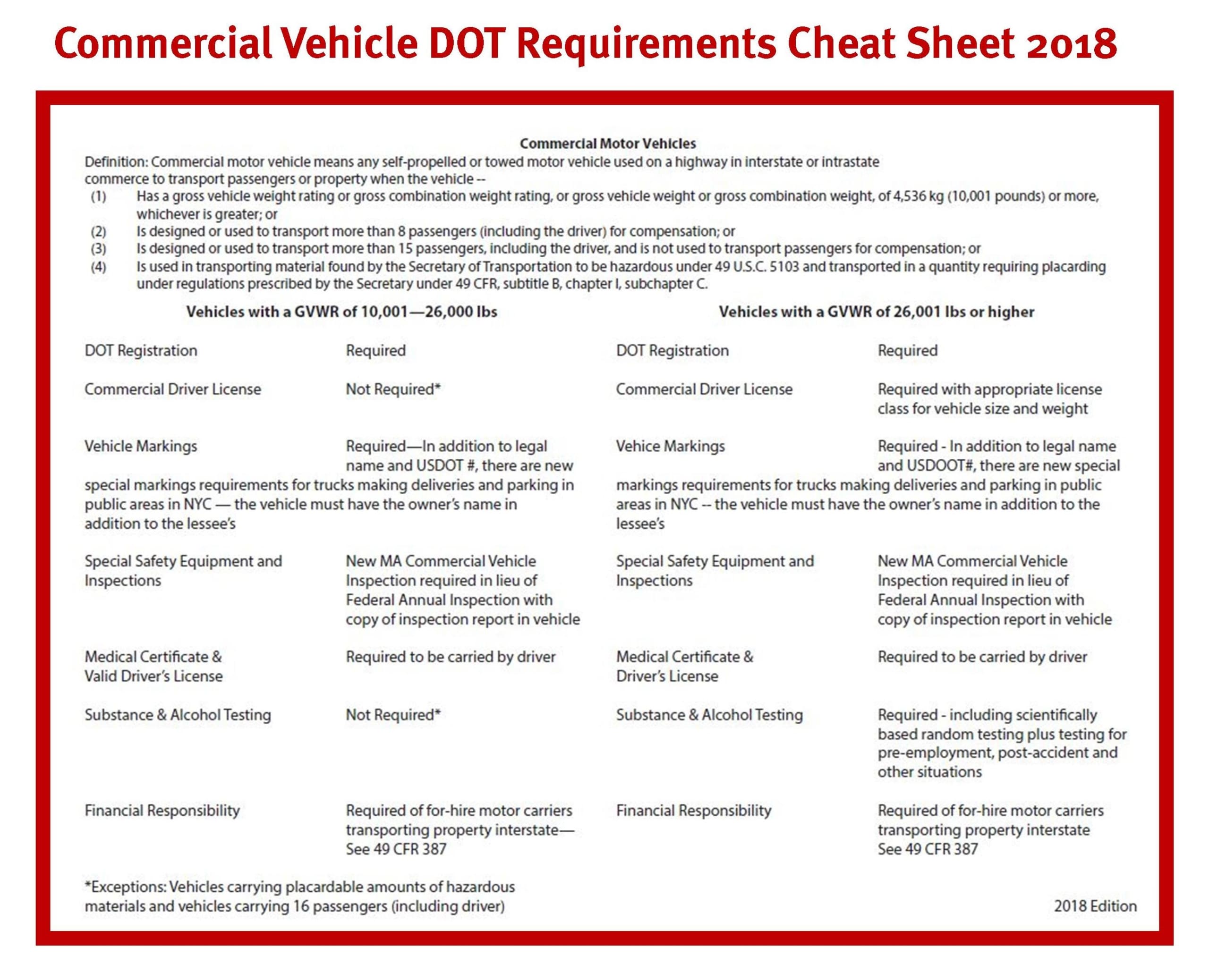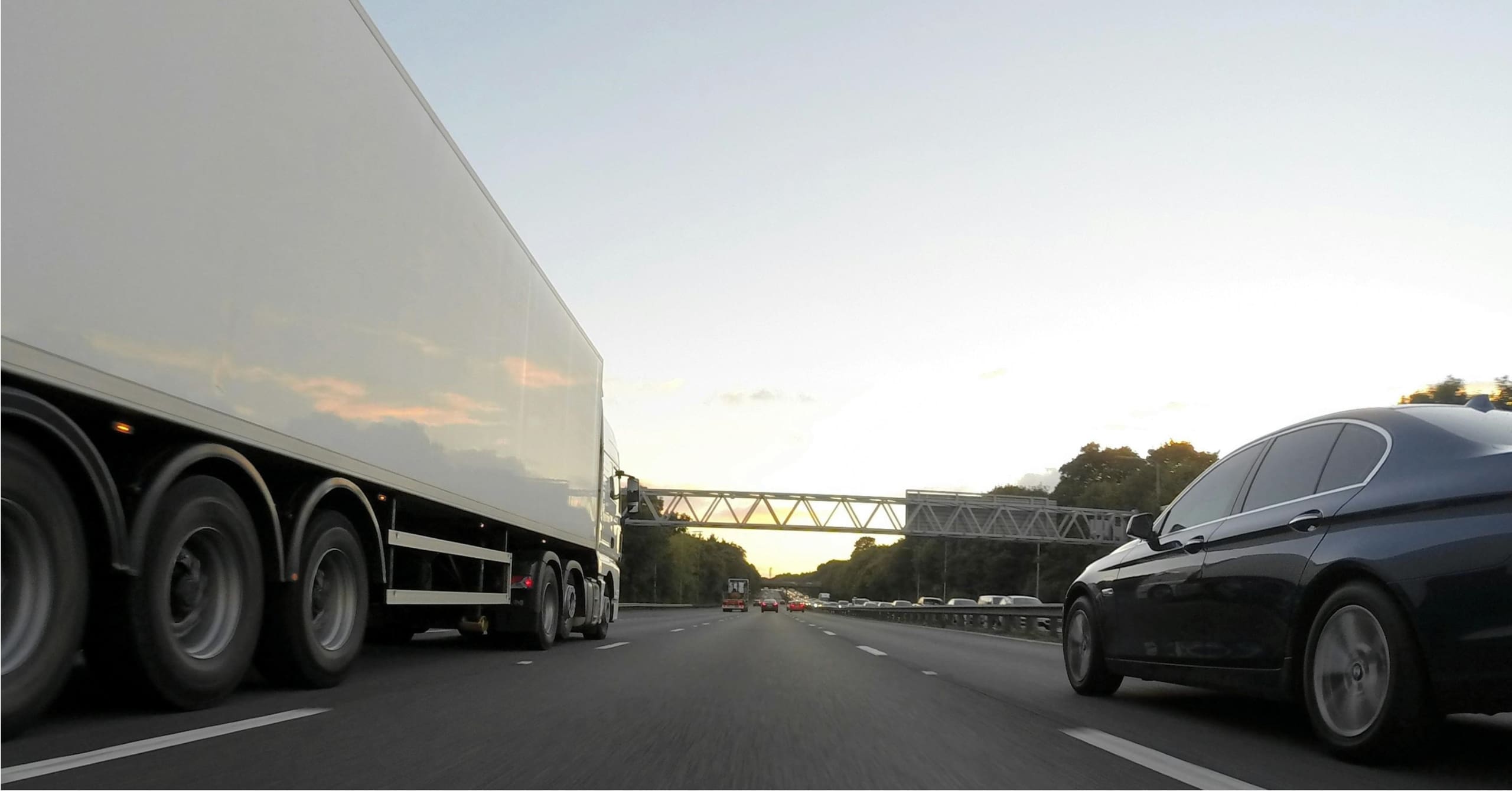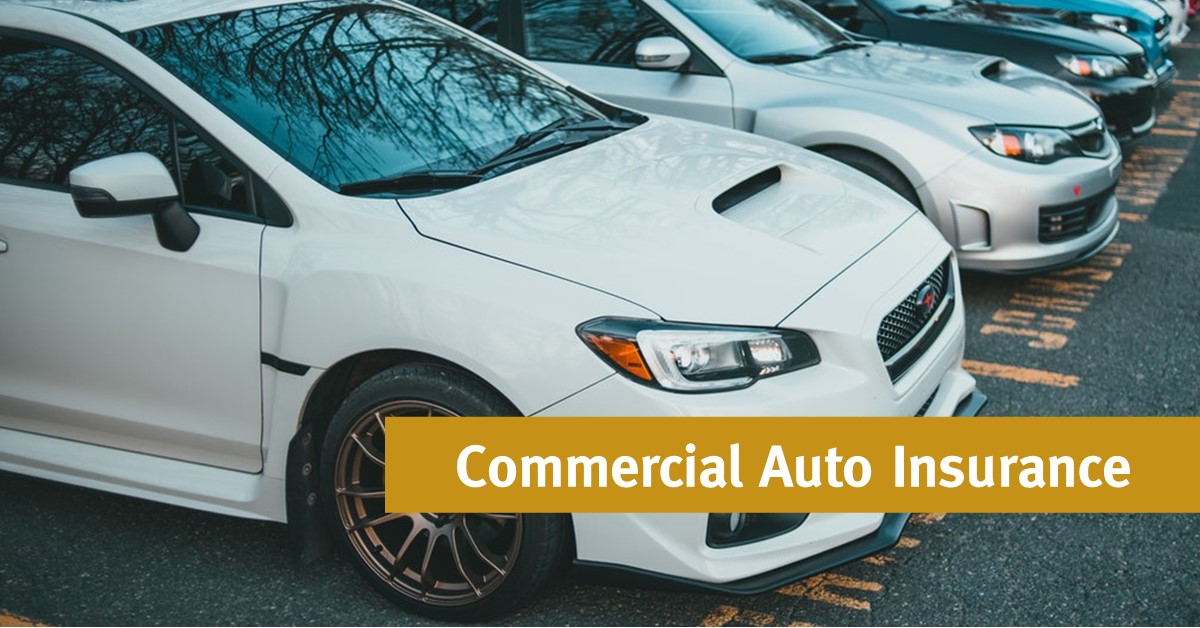RMV: Changes to the MA State Vehicle Markings Regulation 540 CMR 2:22
More Vehicles Subject to US DOT Numbers – Effective September 1, 2018
There have been changes to the Massachusetts State Markings Regulation 540 CMR 2:22 (regulation text below) that will take effect on September 1, 2018. These changes impact marking (aka lettering) requirements for:
- motor trucks used for the transportation of goods, wares, or merchandise for hire, gain, or reward
- any commercial motor vehicles that weigh 10,001 lbs. or more used in intrastate commerce.
The changes could affect customers written on a Massachusetts Auto Policy class 30, such as plumbers, carpenters, electricians, etc.
The Updated Regulation:
1) Affects the type and placement of vehicle markings
2) Requires any vehicle used in intrastate commerce to have a US DOT number. Affected vehicles include those that are:
- Engaged in intrastate commerce having a gross vehicle weight rating or gross combination weight rating of 10,001 or more pounds or
- Used in the transportation of hazardous materials in a quantity requiring placarding or
- Designed to transport more than 15 passengers, including the driver, used in intrastate commerce in Massachusetts.
The Massachusetts State Police Truck team has been stopping people to inform them that by September 1, 2018, the USDOT numbers need to be filed with the Federal Motor Carrier Safety Administration (FMCSA) and visible on their vehicles.
If your company operates a CMV subject to these laws, it must be permanently marked with a USDOT number assigned in a manner conforming to the provisions of 49 CFR 390.21. To obtain a USDOT Number, go to fmcsa.dot.gov. You may follow the Registrations links to get an intrastate USDOT number there. There is no charge to obtain this number from the USDOT-FMCSA.
Check out a Commercial Vehicle DOT Requirements Cheat Sheet 2018 , which may help you clarify how your business and vehicles are classified.
After September 1, 2018, failure to obtain and display a USDOT Number on required vehicles may result in a civil fine and/or placing your CMVs out of Service until your company obtains a USDOT Number. If you have questions about the federal website, call the FMCSA at 1-800-832-5660.
The Updated Regulation Language is as Follows:
2.22: Markings on Commercial Vehicles
(1) Markings
(a) Effective until August 31, 2018. The owner of every motor truck used for the transportation of goods, wares, or merchandise for hire, gain, or reward shall have the owner’s name marked on the truck, to be visible from each side or the front and rear of the vehicle, provided that motor trucks operated under a lease of more than 30 days shall display either the name of the owner or the lessee and may display both. For 540 CMR 2.22(1), the motor truck shall mean any motor vehicle specially designed or equipped to transport personal property over the ways of the Commonwealth and which has a maximum load carrying capacity of over 2,000 lbs., and which is not a Private Passenger Motor Vehicle (see definition below) under 540 CMR 2.05. To the extent there is any conflict between 540 CMR 2.22 and any federal regulation pertaining to markings on commercial motor vehicles, the federal regulation shall control.
(b) Effective September 1, 2018. The owner of every motor truck used for the transportation of goods, wares or merchandise for hire, gain or reward, shall have the owner’s name marked on the truck, to be plainly visible from each side, be in permanent letters that contrast sharply in color with the background on which the letters are placed; be readily legible during daylight hours from a distance of 50 feet while the motor truck is stationary; and be kept and maintained in a manner that retains the legibility required by 540 CMR 2.22(1)(b), provided that motor trucks owned or controlled by a farmer and used to transport agricultural products, farm machinery, and/or farm supplies to or from the farmer’s farm; not used in the operation of a common or contract carrier, and used within 150 air miles of the farmer’s farm need not be so marked; and motor trucks operated under a lease of more than 30 days shall display either the name of the owner or the lessee, and may display both. For the purpose of 540 CMR 2.22(1), Motor Truck shall mean any motor vehicle specially designed or equipped to transport personal property over the ways of the Commonwealth and which has a maximum load carrying capacity of between 2,000 lbs. and 10,000 lbs. and which is not a Private Passenger Motor Vehicle under 540 CMR 2.05. To the extent there is any conflict between 540 CMR 2.22 and any federal regulation pertaining to markings on commercial motor vehicles, the federal regulation shall control.
(2) U.S. DOT Number Assignment for Intrastate Carriers
Effective September 1, 2018, every motor vehicle engaged in intrastate commerce in Massachusetts having a gross vehicle weight rating or gross combination weight rating of 10,001 or more lbs.; and every motor vehicle regardless of weight, engaged in intrastate commerce in Massachusetts and used in the transportation of hazardous materials in a quantity requiring placarding; and every motor vehicle designed to transport more than 15 passengers, including the driver, used in intrastate commerce in Massachusetts must be permanently marked with a USDOT number assigned in a manner conforming to the provisions of 49 CFR 390.21.
(3) Penalty
The penalty for a violation of 540 CMR 2.22 is set forth in M.G.L. c. 90, § 20.
After September 1, 2018, failure to obtain and display a USDOT Number on required vehicles may result in a civil fine and/or placing your CMVs Out of Service until such time as your company obtains a USDOT Number. Whether your company operates intrastate, meaning you conduct business solely within Massachusetts or operates interstate, conducting business in other states; you must obtain your DOT number directly online.
Additional Changes to 540 CMR 2.00
Click to read the additional changes to 540 CMR 2.00 in the following areas:
- 2.05: Vehicle Registration Requirements
- 2:06: Requirements for Driver (Operator) Licenses, Learners Permits and Identification Cards
- 2:07: Year of Manufacture Registration Plate
- 2:22: Markings on Commercial Vehicles
Private Passenger Motor Vehicle Plate Definition
A private passenger motor vehicle for registration purposes is any vehicle:
a) Which has a vehicle weight rating or curb weight of 6,000 lbs. or less as per manufacturer’s description of said vehicle or is a sport utility vehicle or passenger van; or which is a pickup truck or cargo van of the 1/2 TON, 3/4 TON or one TON class as per manufacturer’s description of said vehicle; or which is a vehicle used solely for official business by any college or university police department whose officers are appointed as special police officers by the colonel of the state police under M.G.L. c. 22C, § 63; and,
b) Which, if a pickup truck or cargo van, is registered or leased to an individual, and is used exclusively for personal, recreational, or commuting purposes; and,
c) Which, other than a Personal Transportation Network Vehicle, is not described elsewhere in 540 CMR 2.05.
The terms pleasure vehicle, passenger vehicle, passenger car, automobile, and pleasure passenger vehicle are synonymous with Private Passenger Motor Vehicle. To avoid doubt, the Private Passenger Motor Vehicle shall include, but not be synonymous with, the Personal Transportation Network Vehicle.
Source: Massachusetts Association of Insurance Agents, Commercial Vehicle DOT Cheat Sheet Grid 2018
Visit Our Commercial Auto Insurance Page
Commercial auto insurance can provide protection for any automobile used by your business. It can apply to a single car or to an entire fleet of vehicles and protects your company and employees driving company vehicles in the event of an accident. A policy can be adjusted to meet the coverage needs that fit your company and its vehicles. At Murphy Insurance, we are here to assist you in obtaining the appropriate commercial auto insurance for your business.
Visit Our Business Insurance Page
Murphy Insurance stands as your steadfast partner in safeguarding your business from unforeseen challenges in today’s dynamic business landscape. In an era where comprehensive business insurance is not just a prudent choice but a vital one for ensuring the long-term stability and security of your enterprise, we are here to offer our expertise. Running a business inherently entails various risks that can potentially impact your financial stability and reputation. Learn more about our comprehensive business insurance solutions, which are meticulously designed to protect you from these potential threats, granting you peace of mind necessary to focus on the growth and prosperity of your business.














